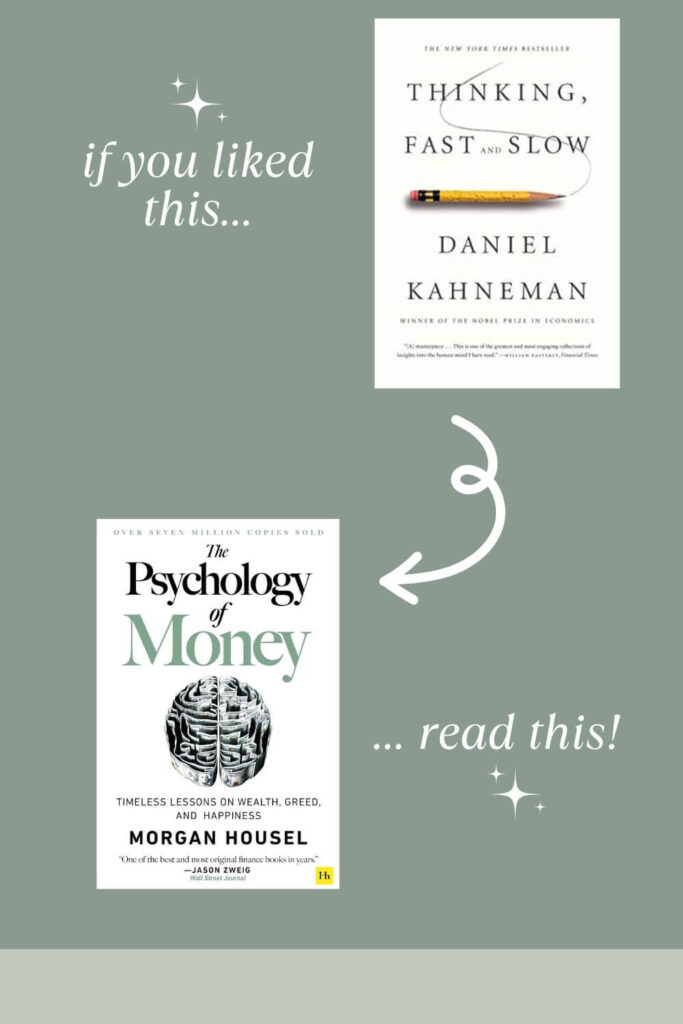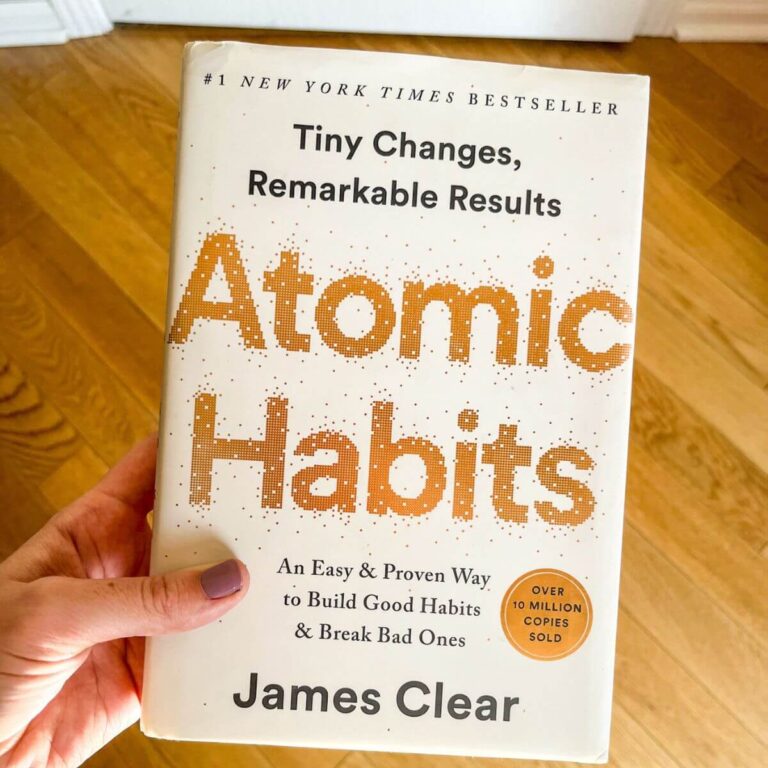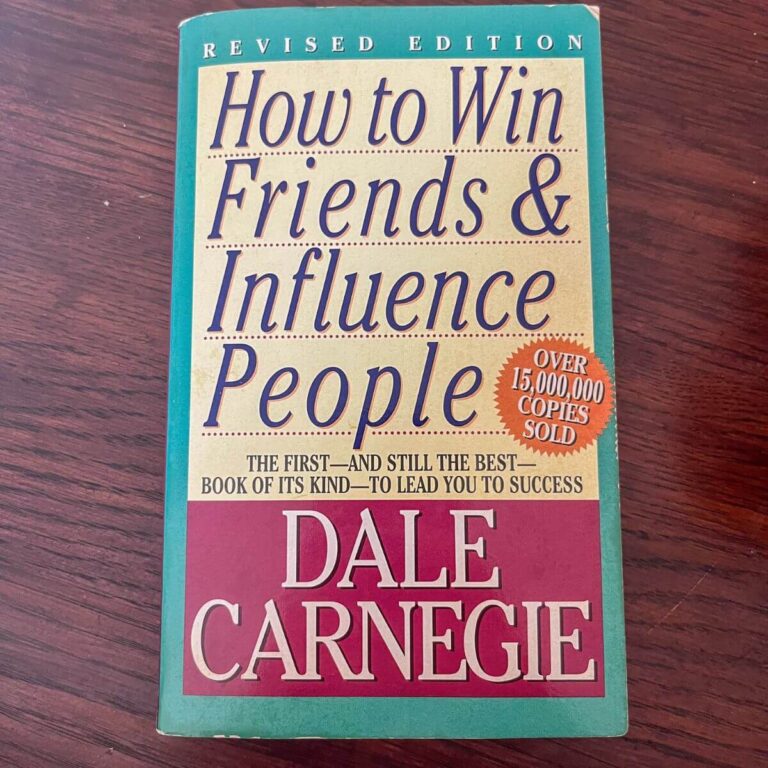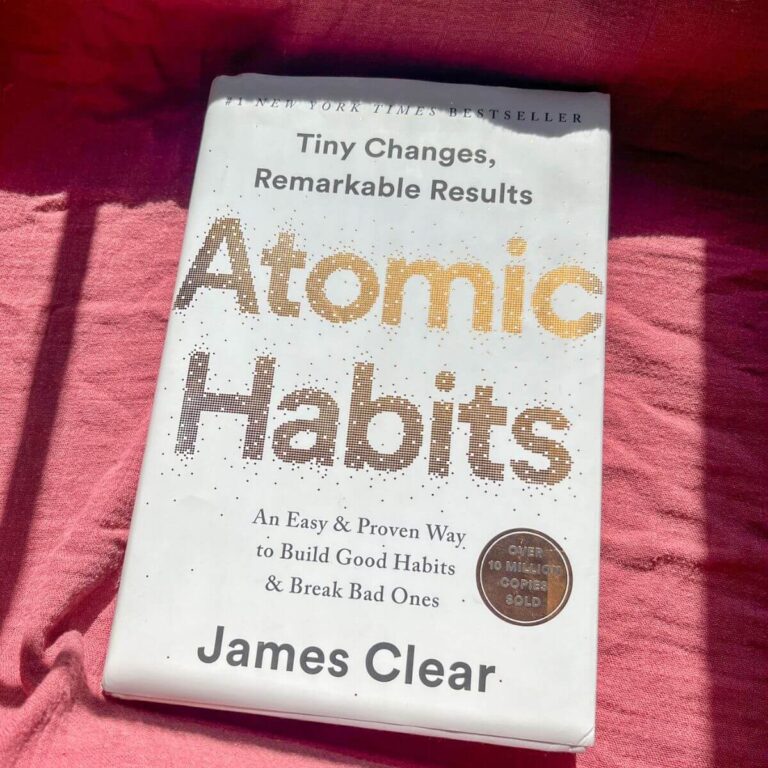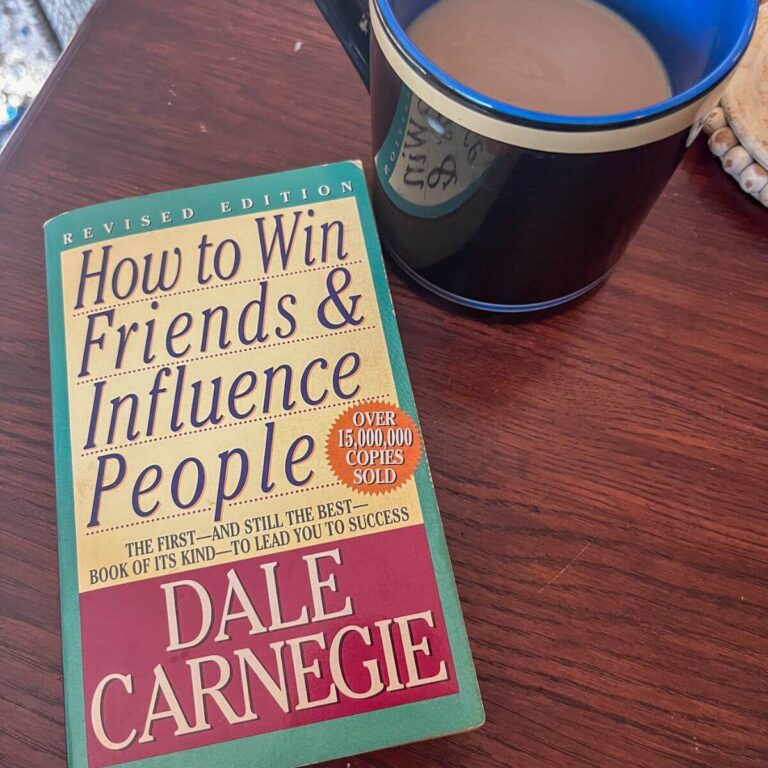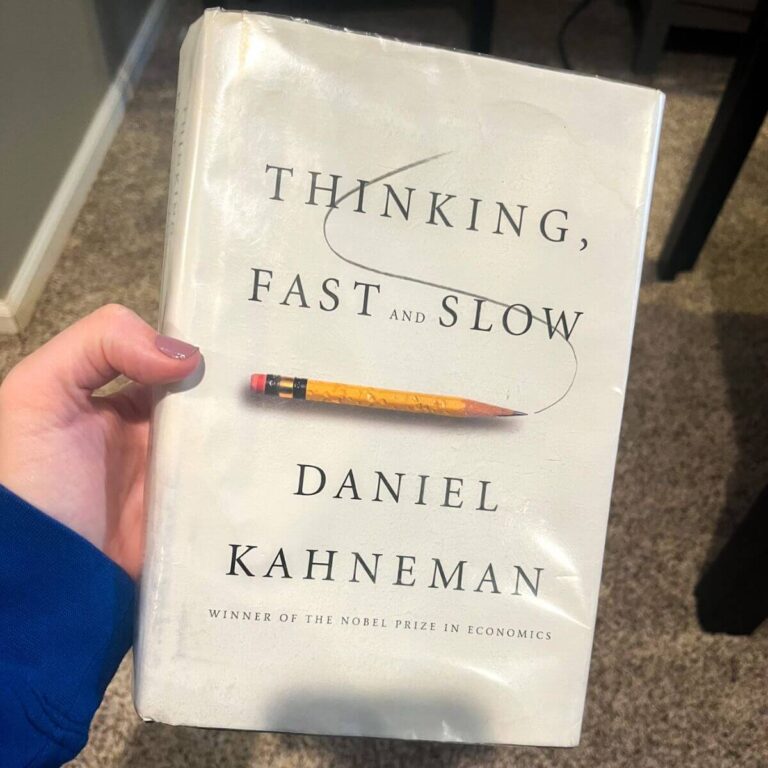Honest Book Review of Thinking Fast and Slow
Check out my honest book review of Thinking, Fast and Slow. From the Nobel prize winner Daniel Kahneman, this book explores how we think and the many things that can influence that we are very rarely aware of.
Here’s a short synopsis of the book:
“In his mega bestseller, Thinking, Fast and Slow, Daniel Kahneman, world-famous psychologist and winner of the Nobel Prize in Economics, takes us on a groundbreaking tour of the mind and explains the two systems that drive the way we think.
System 1 is fast, intuitive, and emotional; System 2 is slower, more deliberative, and more logical. The impact of overconfidence on corporate strategies, the difficulties of predicting what will make us happy in the future, the profound effect of cognitive biases on everything from playing the stock market to planning our next vacation―each of these can be understood only by knowing how the two systems shape our judgments and decisions.
Engaging the reader in a lively conversation about how we think, Kahneman reveals where we can and cannot trust our intuitions and how we can tap into the benefits of slow thinking. He offers practical and enlightening insights into how choices are made in both our business and our personal lives―and how we can use different techniques to guard against the mental glitches that often get us into trouble. Topping bestseller lists for almost ten years, Thinking, Fast and Slow is a contemporary classic, an essential book that has changed the lives of millions of readers.”
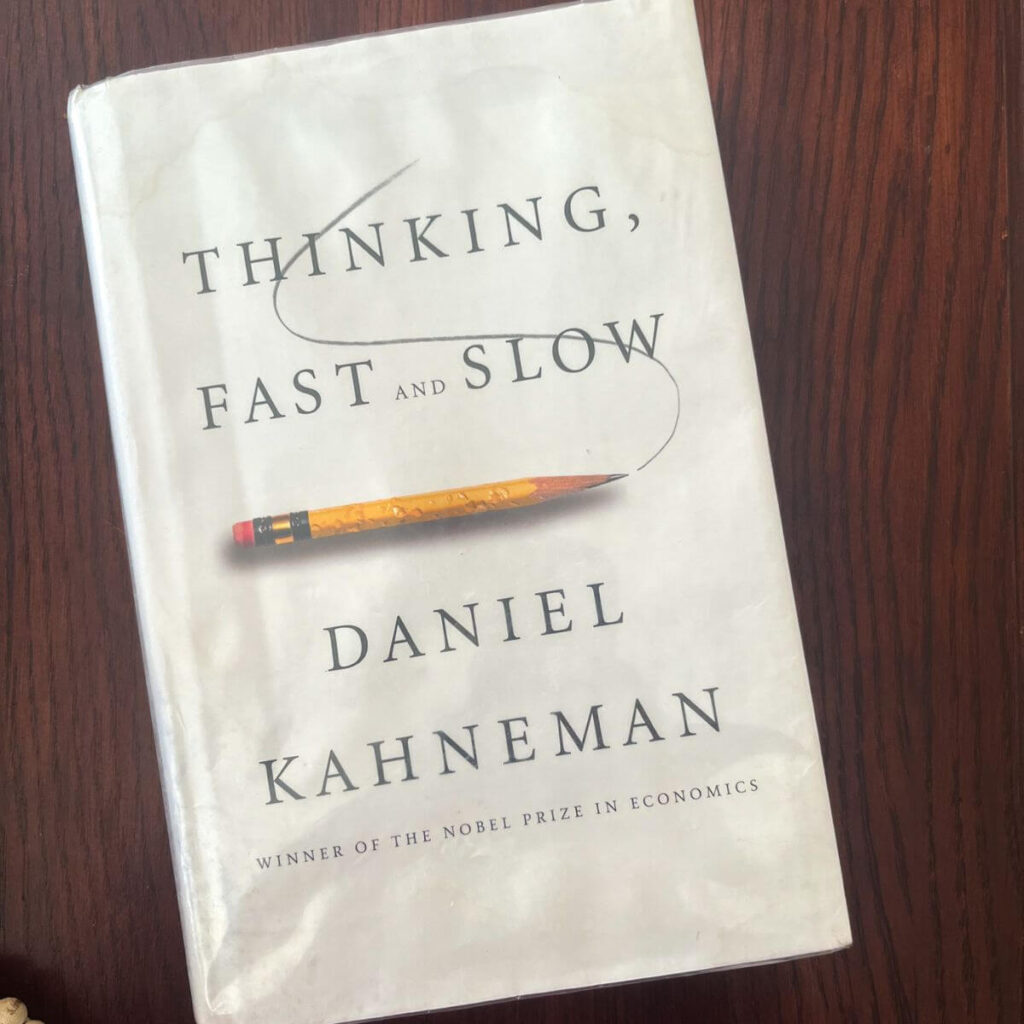
This post may contain affiliate links. Please read our disclosure policy.
Full Book Review
As Kahneman takes you through the slow and fast thinking, you begin to see these biases and tendencies in your life. By being aware of these things that usually happen during automatic decision-making, we can consciously train our brains away from the biases. And with an entire chapter for each topic, you really get a full understanding with examples of where these biases tend to happen in every day life.
The best part about this book is the thoroughness at which Kahneman’s book presents the research and statistical information on each individual biases or topic. You can tell that Kahneman is truly an expert in the field both through his own research and the sheer amount of other research he’s familiar with. This fascinating book really digs into each topic, even presenting contradictory research if there is any.
For those without a basic foundation of psychology research, this may be a more challenging (but I believe worthwhile) read. A few of the chapters I had a hard time following because the author assumes you have some background knowledge of the topics or research methods. The basic idea of each chapter is usually explained well enough for anyone to understand, but the details and research can get confusing.
Is Thinking, Fast and Slow a Self-Help Book?
I’ve seen this book on quite a few list of self-help or self-improvement books. But this is a different kind of self-help, and it’s written much different than popular self-help books. Don’t go into this book expecting it to read like a story or even a list of steps to improve yourself.
If you are looking for a self-help book that gives clear and concise steps to change the way you think or live, this is not it. There’s tons of good information about thinking, habits, and decision-making in the book, but it’s not presented in that way. You could definitely improve yourself if you’re willing to sift through all the information given and think of your own ways to implement it into your life.
Key Takeaways
In the end, Mr. Kahneman says the best way to combat these cognitive fallacies is to be aware of situations these likely occur and just slow down. What better way to be aware of these than to read this book that’s an exhaustive tour of biases.
I think anyone can get something out of reading this book, and there’s so many different ways you can use the book to improve your thinking and decision making.
Whether or not Kahneman (and his collaborator Amos Tversky) have found the most accurate model of the mind and thinking is for much more educated people to decide. But I still really enjoyed the book and found takeaways for my own life. There’s many ways the book gives to slow down our fast-acting system and stop making rash decisions through conscious effort.
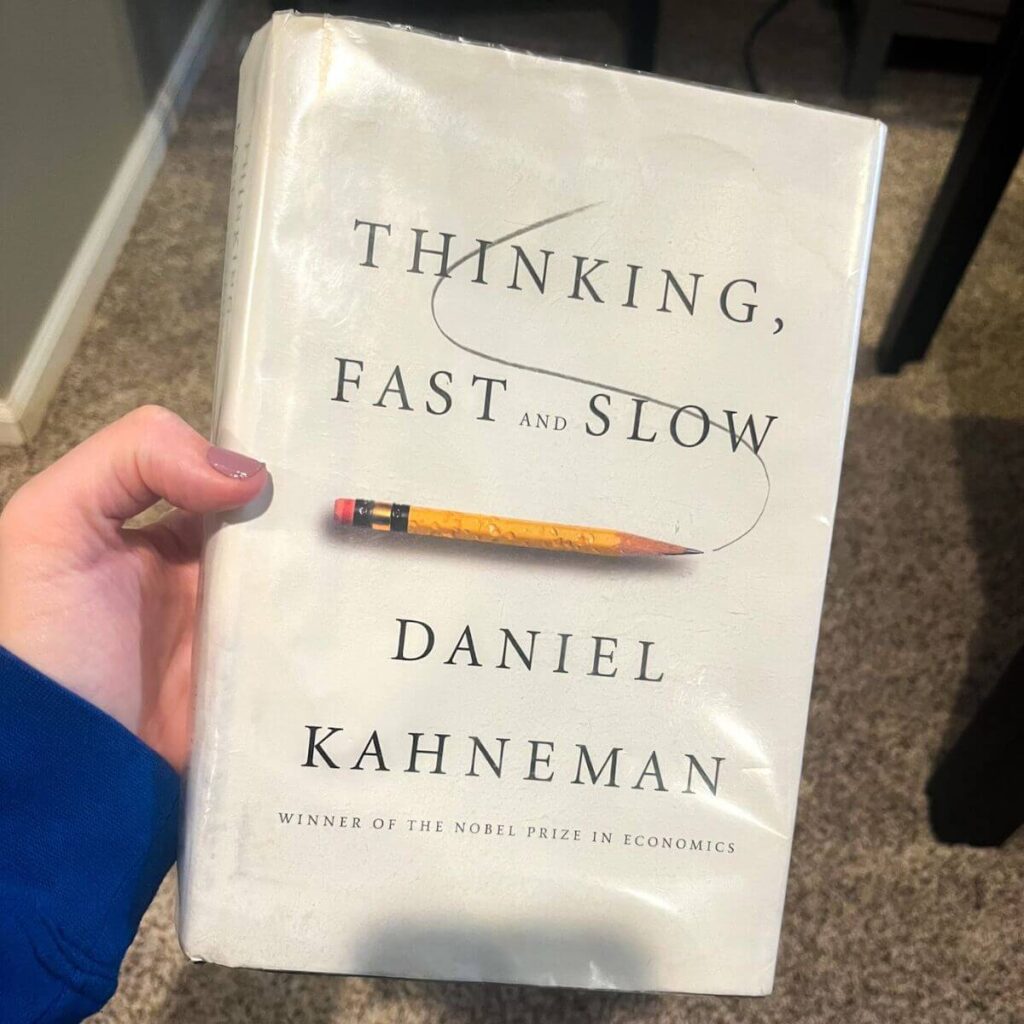
Pros of the Book
The biggest pro of this book is how thoroughly the author has researched and presented the many fallacies people use in thinking and decision making. Every chapter goes through another aspect, each with the subsequent research and a famous example or two. Many of the topics presented are ones you may not have realized go into thinking.
Another pro of this book is that there’s examples of actual people who use these fallacies in everyday life and how to identify them. There’s tons of interesting stories throughout the book that help make the concepts interesting and applicable. And, especially in the second half of the book, the author gives ways to identify and combat these cognitive processes in real life.
Cons of the Book
The biggest con of this book is that it’s a thick read; not only is it long, but there’s such a large amount of information written within each chapter. It’s also written in a more academic way compared to a story form making it hard to read a lot in a row.
The second con of the book is that it can be a challenging read if you have no background in psychology or in reading research-based information. It took me a lot of effort to stay on track in the book, and I have studied psychology in college. For me, the effort was worth it, but for others it may not be.
Conclusion
Overall, I enjoyed reading and learning from this book because I have a real interest in psychology. I find the psychology behind how we as human think and make decisions extremely interesting, so that helped me get through the entire book. It was dense with information and slow at times, so you have to have real interest in the topics.
This book is not one you sit down and read cover-to-cover. Take it in smaller doses as each chapter contains so much information. If you are interested in learning more about these topics, it’s worth the read though.
You can find the book here.
I have a full summary of the book here if you need a refresher on any of the main points.

Rating-3.75 out of 5
As someone very interested in psychology and how the mind works, I found this book to be very interesting even though it was a slower read. It’s not as easy to read as some of the more popular self-improvement books and would feel like a lot if you have no background in psychology at all. The entire book is so full of information, it did take awhile to finish, but I still found key takeaways.
Here’s how I rate all my books: My Rating System
Who Would Enjoy Reading?
If you are interested in cognitive psychology, this would be an amazing book for you. Also, if you’re just very interested in our decision-making processes or work in economics, you’d also get a lot out of this book. This book may not be well suited for general readers or fans of the popular self-improvement books.
What to Read After Thinking, Fast and Slow
Whether you enjoyed reading this book or you just enjoy the topics covered in the book, I have some more recommendations for you. Check out these other self-improvement or psychology books that cover similar ideas or topics.
Noise: A Flaw in Human Judgement by Daniel Kahneman, Olivier Sibony, & Cass R. SunStein
If the topics in this book were something that you’re really interested in, try this book! It gives even more real world examples of the cognitive illusions we use to make decisions. Check it out here.
Atomic Habits by James Clear
If you really enjoyed the decision-making systems part of the book, check out Atomic Habits. This is an especially good option if you found Thinking, Fast and Slow a little hard to read and are looking for something more concise with clear ways to use it in everyday life. You can find the book here.
I have a review and a summary of this book as well.
The Psychology of Money by Morgan Housel
Going off some of the principles of behavioral economics in Thinking, Fast and Slow, this book drives even deeper into how the human mind acts regarding money. If you were mostly interested in the economic topics, check out this book next! You can get the book here.
